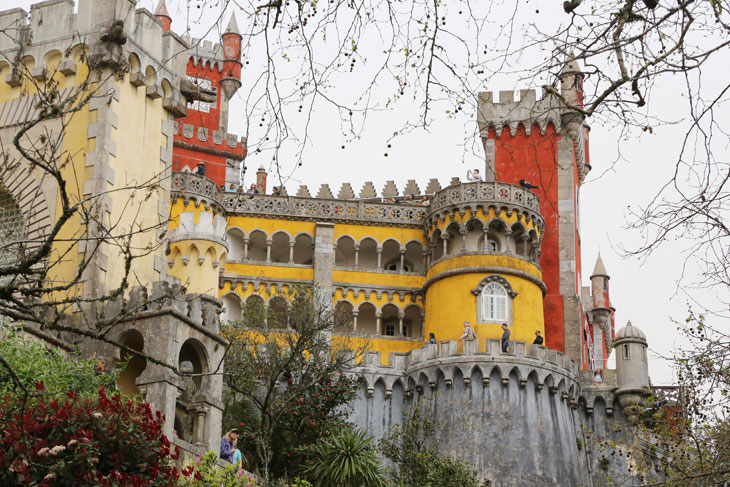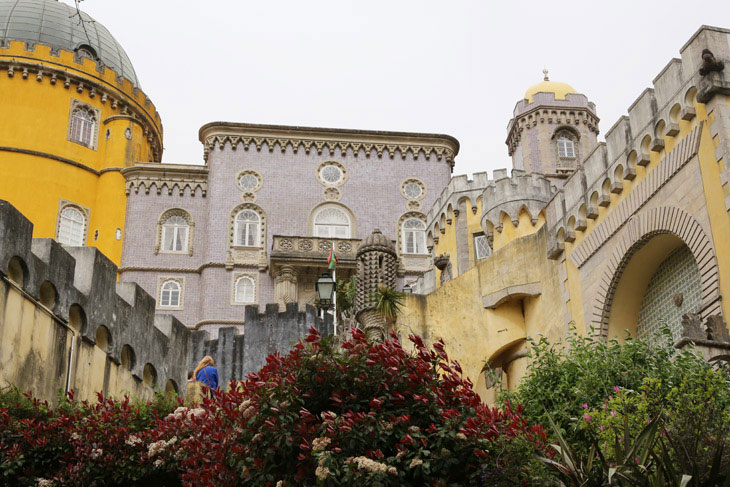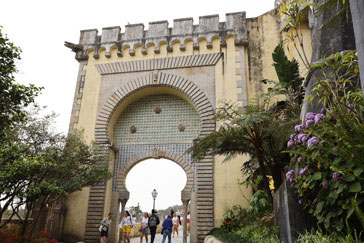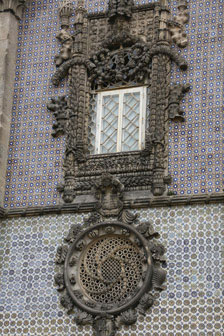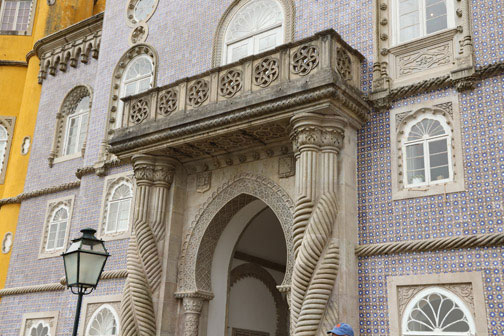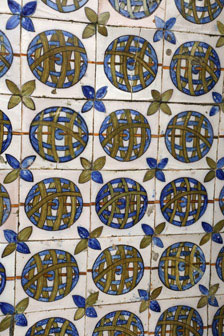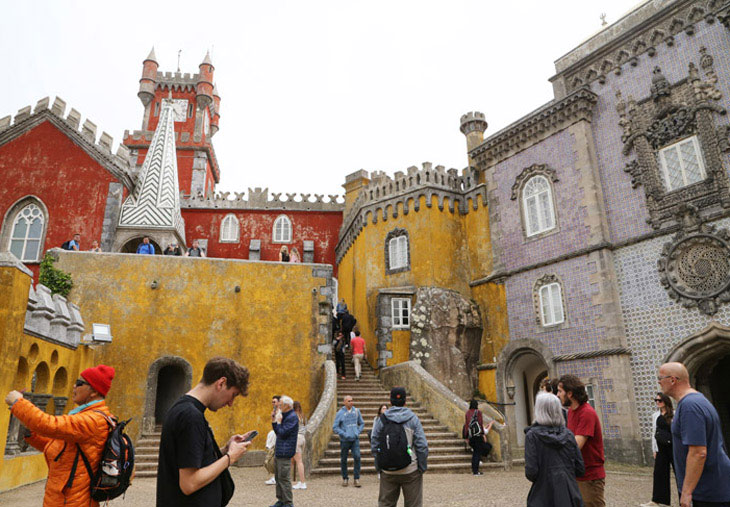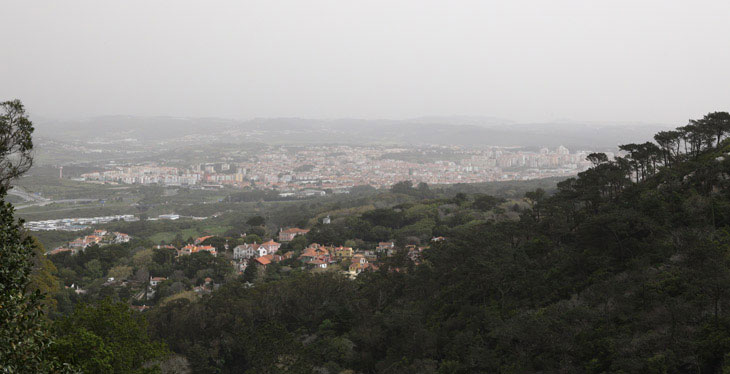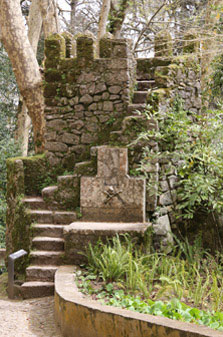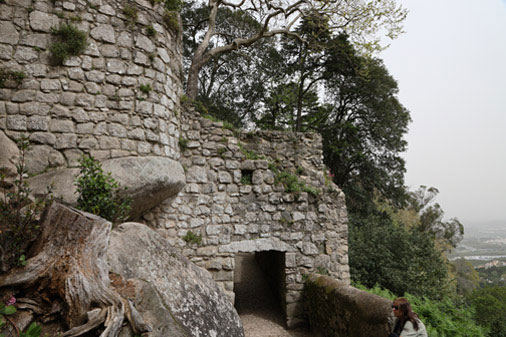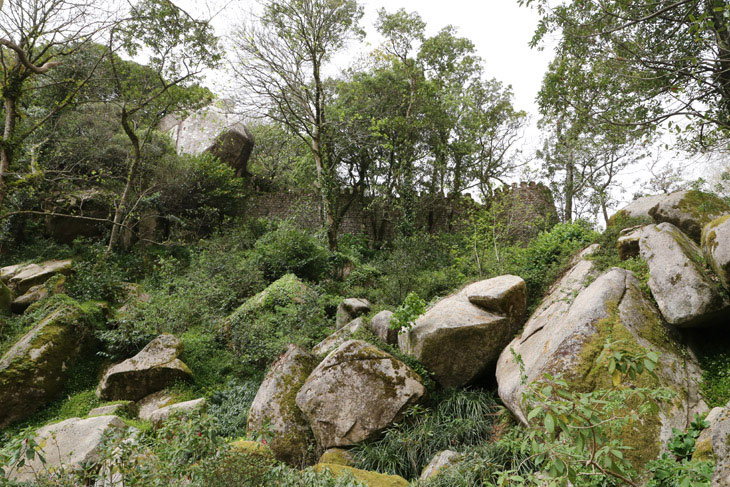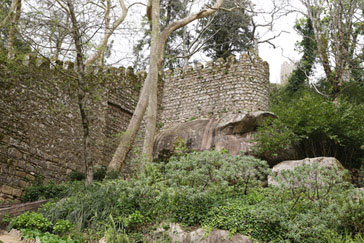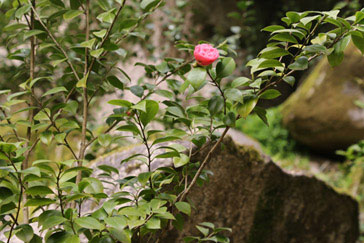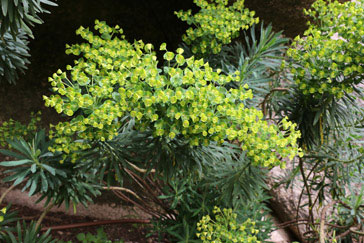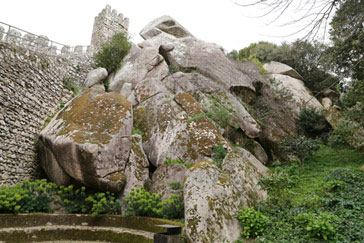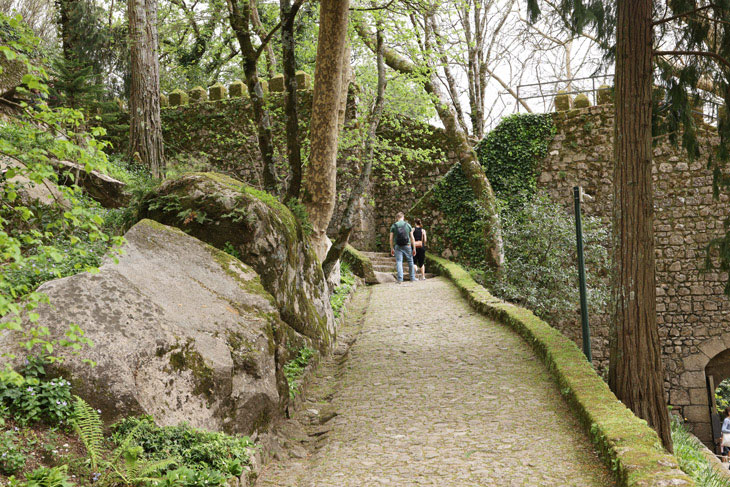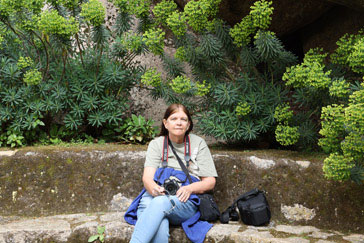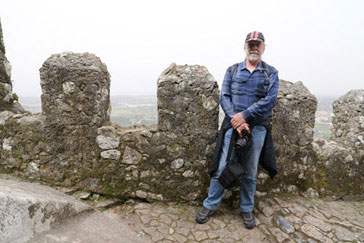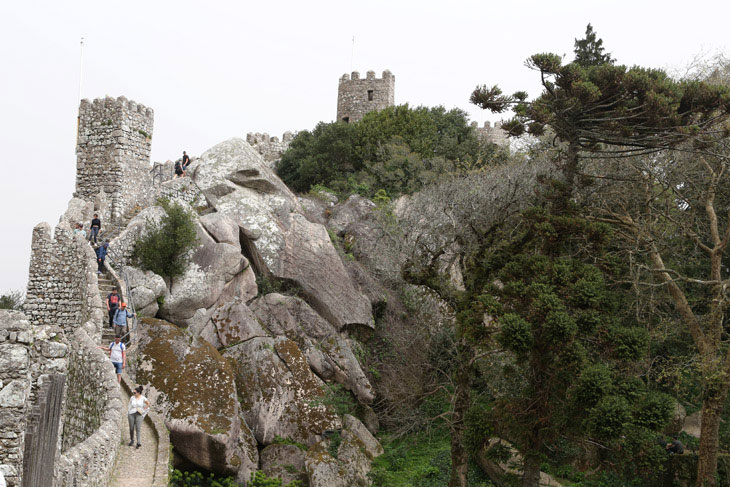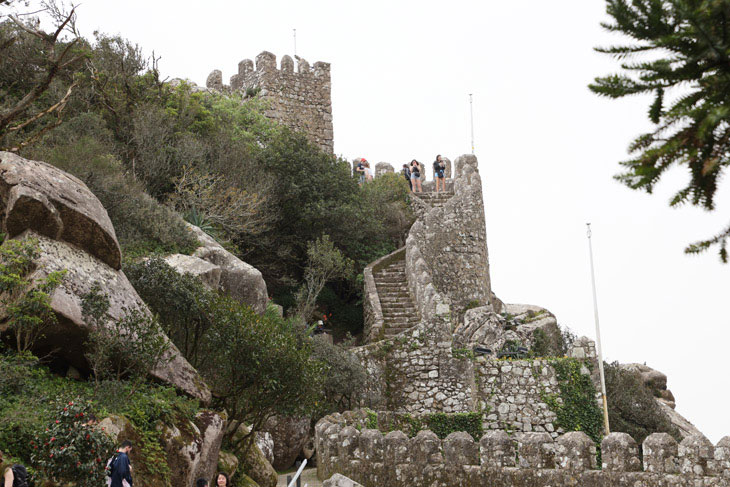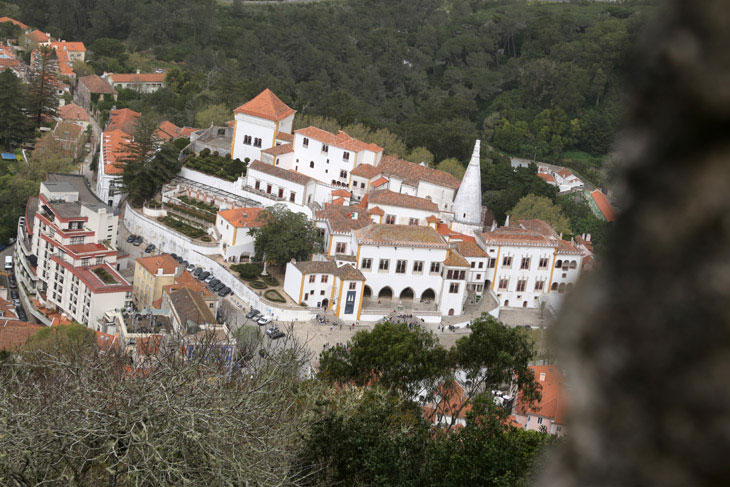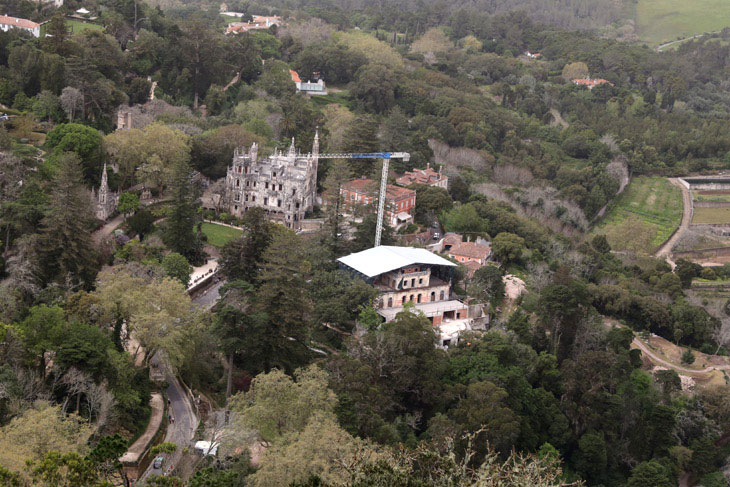Childhood Dreams
Sintra - Pena Palace and The Moorish Castle
Figuring out how to get to Sintra and what to do after we arrived required quite a bit of research. There's so
much to see in the picturesque little town. We visited it twice - once at the beginning of the trip and again
at the end - and we were still unable to see everything we wanted to see.
To get to Sintra, we took the train from Rossio Station which was a short walk from our hotel. The train, which
makes many stops along the way, is used by both tourists and locals going about their day. It takes about 40
minutes to travel from Rossio at one end of the line to Sintra at the other.

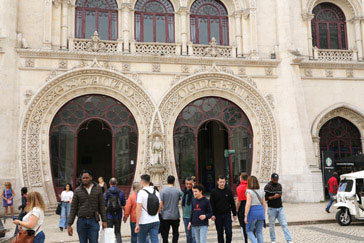
Chaos ensues at the Sintra train station. The horde of tourists emerging from the train is quickly surrounded by
a pack of enthusiastic tuk tuk drivers offering rides and personal tours in a wide assortment of vehicles. The
prices are often surprisingly low.
Most tourists are heading for Sintra's main attraction, the Pena Palace, which is located high on a hill overlooking
the town. We joined the masses that opted to get there on the popular 434 bus. This was surprisingly well-organized.
Several women were selling tickets to the crowd as they waited in line, and we soon found ourselves on a bus racing
through the steep, narrow streets of the town to the gates of the garden that surrounds the palace.
From the garden gates, the guidebooks say it is a steep 30 minute up-hill walk to the palace itself. Alternatively,
you can buy tickets online to take a small shuttle. We had purchased tickets for the shuttle which we agreed had been
well worth it when we finally reached the palace itself and saw people who looked quite fit panting breathlessly as
they completed the climb.
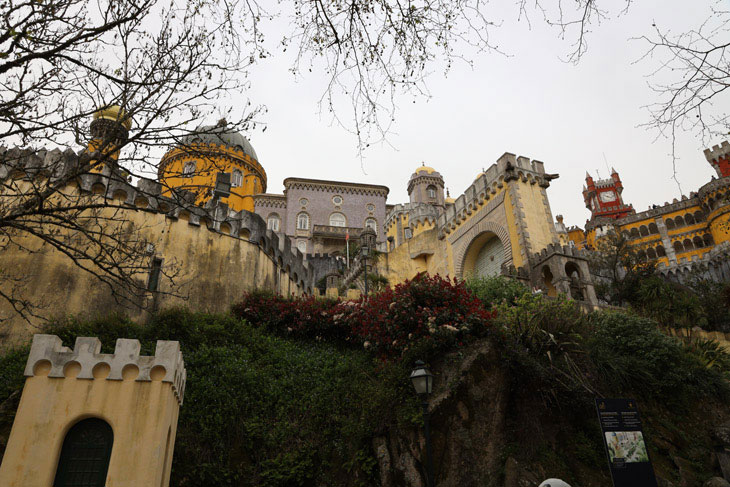
I must confess that I was not overly impressed when we finally arrived at the palace. It looked like it could use a
power wash and some fresh paint.
It was built by Ferdinand II, one of the most cultured men of 19th century Portugal. As a young prince, he was
greatly impressed by the beauty of the area and later, when he became King consort, he built the palace as a summer
residence for the Portuguese royal family.
We climbed the steep walkway and passed through the ornate gate to the terraces. Although we visited in March, well
before the height of tourist season, the site was already quite crowded.
It is believed that Ferdinand designed the figure of Triton that adorns the Coral Gate.
To visit the inside of the palace, you must purchase a timed entry ticket. After reading about the experiences
of several bloggers and considering our aversion to large crowds, we had decided to visit the inside of the
National Palace instead of the inside of Pena Palace so after admiring the facade and the views, we set out for
our next destination - the Moorish Castle.
The aforementioned 434 Bus follows a one way, circular route stopping first at the Moorish Castle and then going
on to Pena Palace. We wanted to visit Pena Palace as early as possible when the crowds would be smaller so we had
to walk about 15 minutes, mostly downhill, along the busy roadway to get back to the previous bus stop. A pleasant
paved path leads through the woods from there to the Moorish Castle.
On the way, we passed what I think is the remains of a guardhouse.
The walls of the castle soon appear.
The castle was probably built in the 8th centry when the Moors occupied the area. In 1147 it was handed over to
the first King of Portugal, Alfonso Henriques, after his conquest of Lisbon. When Ferdinand II acquired the land
for Pena Palace, he also began restoring and preserving the ruins of the castle.
I really enjoyed spending time at the castle. It was a very peaceful place, and the woods were inviting.
We spent some time climbing the many steps along the walls and admiring the views.
We looked down on the National Palace which we planned to visit on our return to Sintra.
This is the Quinta da Regaleira, which we would also visit later.
It was time to head back to Lisbon so we walked back to the Moorish Castle bus stop and boarded the 434
bus for the return trip to the train station. Although we were exhausted, we had greatly enjoyed our trip
to Sintra.



